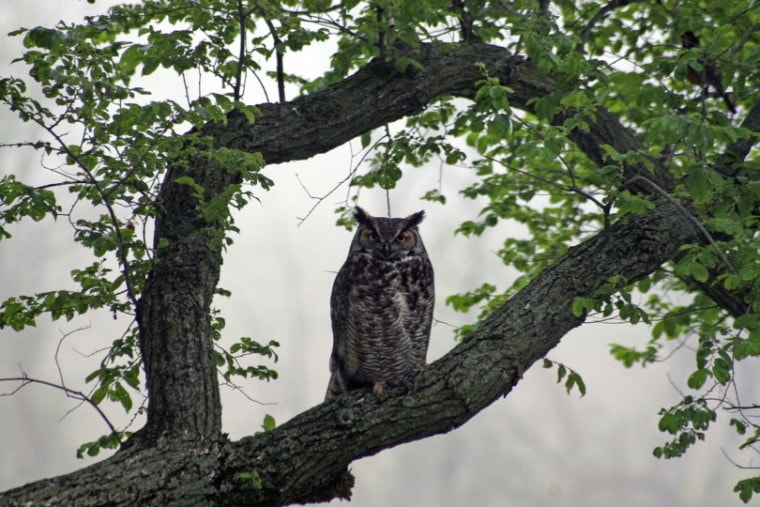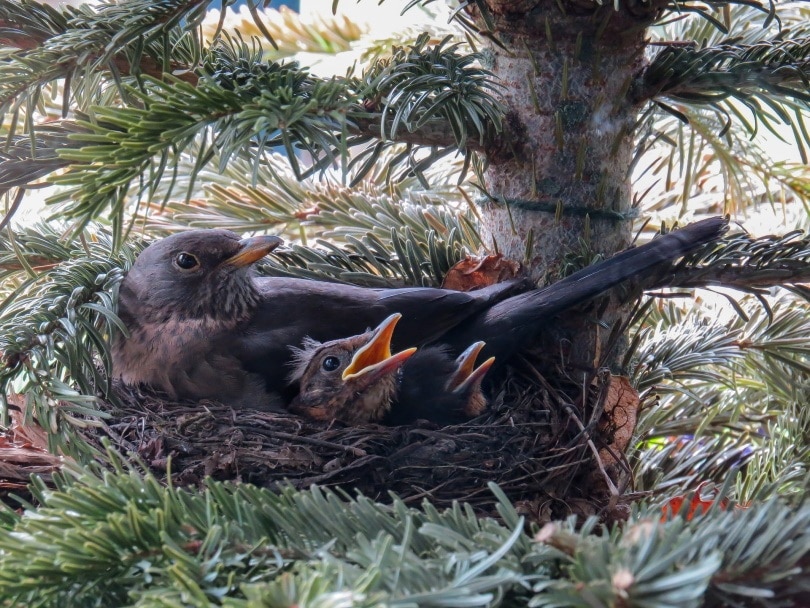
Note: This article’s statistics come from third-party sources and do not represent the opinions of this website.
Birds of prey are large and fast, with sharp beaks and talons that can do serious damage to anything or anyone in their path. The wild birds on this list all have a reputation for being dangerous birds, and all of them make their home in the Great White North. Keep in mind, though, that these birds don’t usually show aggression for no reason. They act out due to some sort of threat, whether that is protecting their young or trying to find food. However, these birds are considered dangerous to animals and humans under the right circumstances. Read along while we discuss the following two categories:
The 5 Most Dangerous Birds in Canada
- In Ottawa, a Canada Goose once landed a woman in the hospital for 5 days.
- The American Crow population has grown by roughly 20% in the past 40 years, with an estimated population of 27 million.
- Peregrine Falcons dive at speeds of 200 mph.
- Barred Owls pounce on prey with a force equivalent to 150 times the weight of a rodent.
- Great Horned Owls are aggressive hunters, known for being able to capture porcupines. The clutching force of their talons is as strong as 500 PSI.

General Dangerous Bird Statistics
1. In Ottawa, a Canada Goose once landed a woman in the hospital for 5 days.
(CBC)
Canadians are familiar with the aggressive tendencies of the Canada goose. An Ottawa cyclist was attacked by two adult geese making their way across a bike path with their goslings. As a territorial and protective species, the geese misread her intentions to cycle past and attack her, leaving her with a concussion, fractured cheekbones, facial lacerations, and loose teeth.
This scenario isn’t unique. Canada geese frequently attack humans in their path, charging and honking at people who enter their territory.

2. The American Crow population has grown by roughly 20% in the past 40 years, with an estimated population of 27 million.
(BirdLife International)
Crows are incredibly territorial during the spring. They are known to dive and strike at humans repetitively until the humans move a safe distance away from the nest. Crow attacks are so common in the city of Vancouver, that they have created CrowTrax, a geographical information system to alert people of attack locations.

3. Peregrine Falcons dive at speeds of 200 mph.
(Earth Sky)
Peregrine falcons prey on smaller birds like songbirds, doves, and pigeons. They fly high in the sky and dive quickly to grasp their prey with their sharp talons. They then use their sharp beaks to tear apart their victim. As some of the fastest animals in the world, peregrine falcons circling overhead are dangers to small pets and people who may be in their path.

Owls
4. Barred Owls pounce on prey with a force equivalent to 150 times the weight of a rodent.
(Audubon Society)
An owl weighing less than 1 pound can fly at speeds of 40 miles per hour. A strike against a human would cause serious blunt force trauma. This led to the “Owl Theory” being used as a defense in a murder trial in Durham, North Carolina, which dragged on for over 15 years.

5. Great Horned Owls are aggressive hunters, known for being able to capture porcupines. The clutching force of their talons is as strong as 500 PSI.
(Britannica)
Great Horned Owls have received a great deal of attention for their attacks on humans. They are powerful predators that grow to over 2 feet long, with wingspans approaching 80 inches long. Their 500 PSI clutching force is comparable to the bite of a large guard dog and strong enough to blind, disfigure, and even kill.

Frequently Asked Questions About the Most Dangerous Birds in Canada
Which Canadian birds dive-bomb humans?
There are several Canadian bird species known for dive-bombing humans, and most of them are surprising to people who haven’t experienced this phenomenon. (Treehugger)
How do you avoid a bird attack?
Most of the time, birds attack because they feel that you are a threat. It could be that you are too close to their young, their eggs, or their nest. The best way to deter a bird from attacking is to heed their warnings. Most, if not all, birds that feel threatened will warn you with a dive, a swoop, wing flapping, honking, and other obnoxious behavior. By simply moving away from their nest, they will stop bothering you.

How do you get rid of swooping birds?
Moving quickly away from the birds will often stop the behavior. While walking away, there are a few things that you can do.
Making eye contact with birds scares them into thinking that you are a predator. While walking away, put your sunglasses on the back of your head so the bird thinks that they are eyeballs. Wearing a hat with eyes drawn on the back works too. These tactics are especially helpful for swooping magpies, which run from anyone who looks them in the eye.
Conclusion
Canada is home to several different species of predatorial, dangerous birds. Human attacks aren’t common, but it is important to recognize the harm that these birds can cause and stay out of their way.
Related Reads:
- 12 Canada Bear Attack Statistics & Facts to Know
- 11 Canada Deer Car Accidents Statistics
- 10 Most Dangerous Animals in Canada
Featured Image Credit: Pixabay






